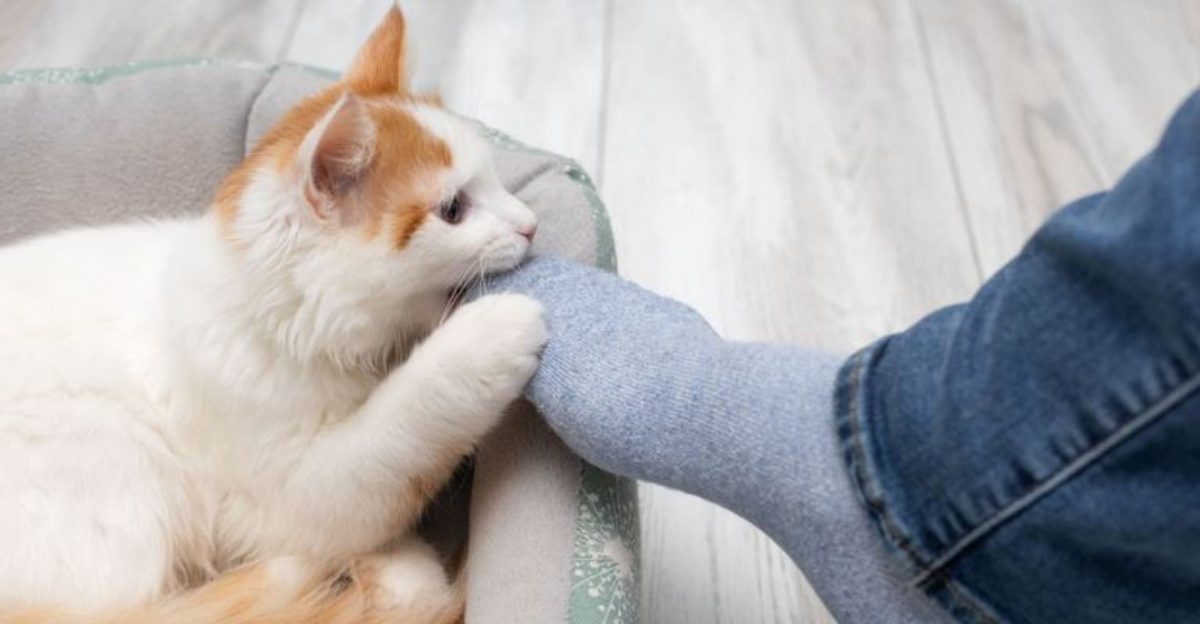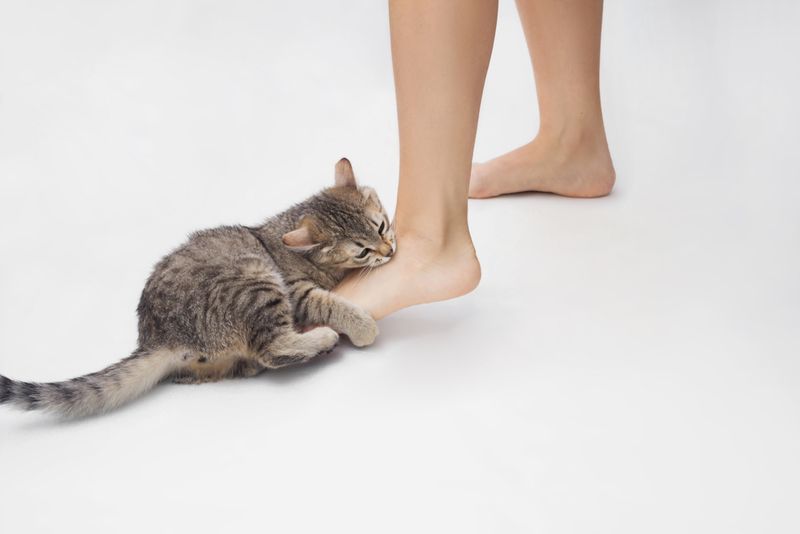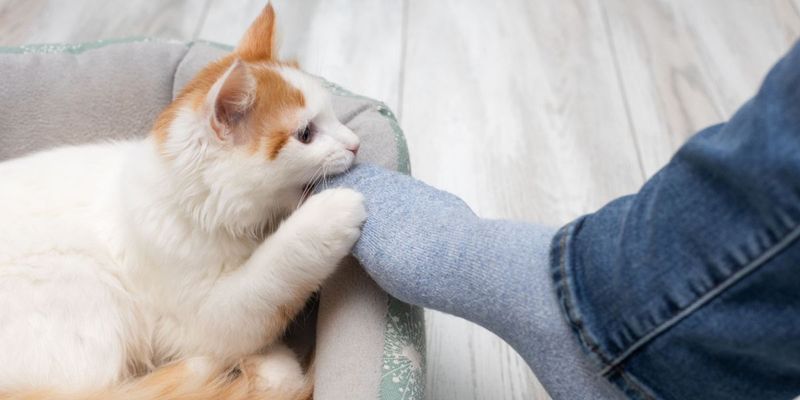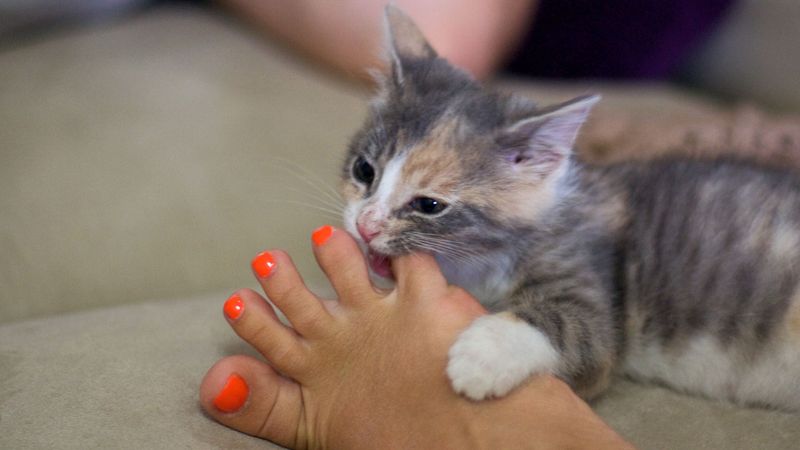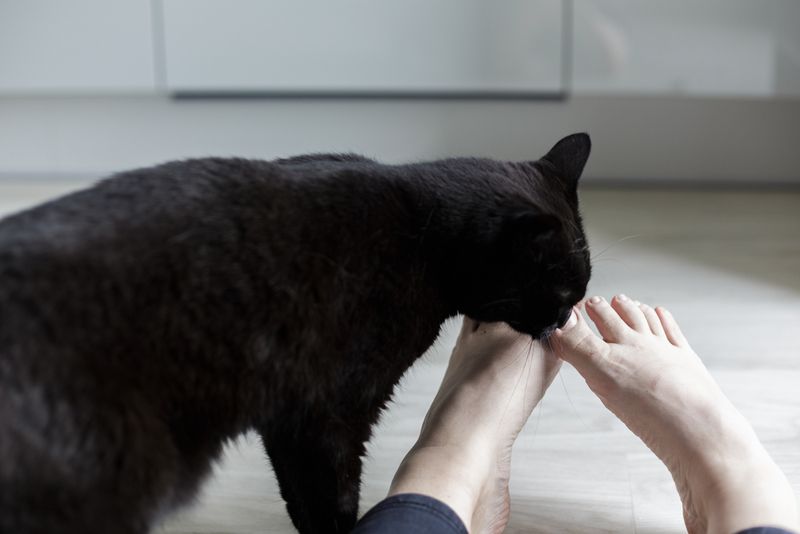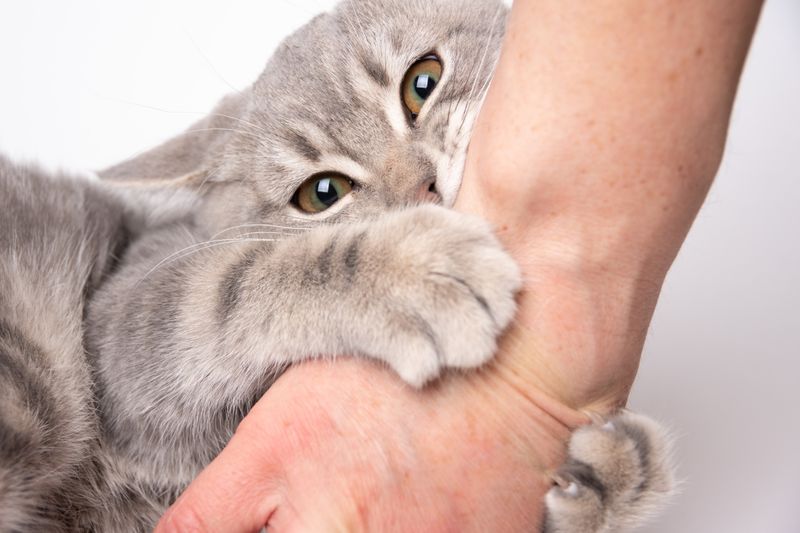📖 Table of Content:
From playful exploration to expressing affection, kittens’ love for nibbling toes is both endearing and intriguing. As they grow and learn about their world, your toes become an irresistible target for their curious antics. Understanding these behaviors not only deepens your connection with your feline friend but also helps manage these playful nibbles. Join us on this delightful journey into the world of kittens and their toe nibbling tendencies, revealing the surprising reasons behind this adorable behavior.
Playful Exploration
Curiosity sparks the journey of every kitten. Imagine your playful furball, eyes wide with wonder, discovering the world one nibble at a time. Toes, often wiggling and moving, present an engaging challenge. This exploration is not just about curiosity—it’s how kittens learn about their environment. In this playful dance, they develop motor skills and refine their senses. Each gentle nibble is a step in understanding textures, tastes, and reactions. Such exploratory behavior is crucial in their early developmental stages, providing both entertainment and education. These initial encounters lay the foundation for a lifetime of playful discoveries.
Hunting Instincts
Hidden beneath their adorable exteriors, kittens harbor the instincts of formidable hunters. This is particularly evident when your toes become their prey. It’s as if each twitch of your foot stirs the age-old instincts of a predator in the wild. The chase is invigorating, providing them an outlet for their boundless energy. Unlike the wild, your toes represent a safe, controlled environment for these instincts to flourish. Observing this micro-safari is not only amusing but is a testament to nature’s enduring influence. These playful hunts cater to their natural drives while ensuring your kitten remains engaged and stimulated.
Teething Relief
Just like human infants, kittens experience the discomfort of teething. During these phases, nibbling becomes a source of relief. Soft objects, such as toes, provide the perfect balance of resistance and comfort for sore gums. This behavior is instinctual, a natural response to the teething process. As their adult teeth make their debut, toes offer a gentle solution to alleviate pain. It’s a mutual exchange where curiosity meets necessity, offering a glimpse into the complex and endearing world of feline development. This phase, though temporary, plays a pivotal role in their growth and understanding of textures.
Affectionate Behavior
Affection takes many forms in the animal kingdom, and kittens have their unique expressions. A soft nibble, accompanied by purring, often signifies a bond akin to love. This gesture mirrors the grooming rituals shared between a mother cat and her kittens. By nibbling your toes, they extend this intimate behavior to their human companions. It’s a heartwarming display of trust and connection, reinforcing the bond shared between you and your furry friend. Such acts of affection are subtle yet profound, highlighting the deep, emotional ties that can form between species, transcending the boundaries of communication.
Attention-Seeking
In the dynamic relationship between kittens and their owners, attention is a prized commodity. When kittens feel overlooked, they often resort to toe nibbling to draw focus. These tiny antics serve as both a call for interaction and a playful provocation. The act is a clever strategy—one that seldom fails to capture attention or elicit laughter. Observing their antics, it’s clear that kittens are adept at ensuring their presence is felt and their needs are met. This behavior underscores their intelligent and social nature, revealing their yearning for companionship and engagement in their daily lives.
